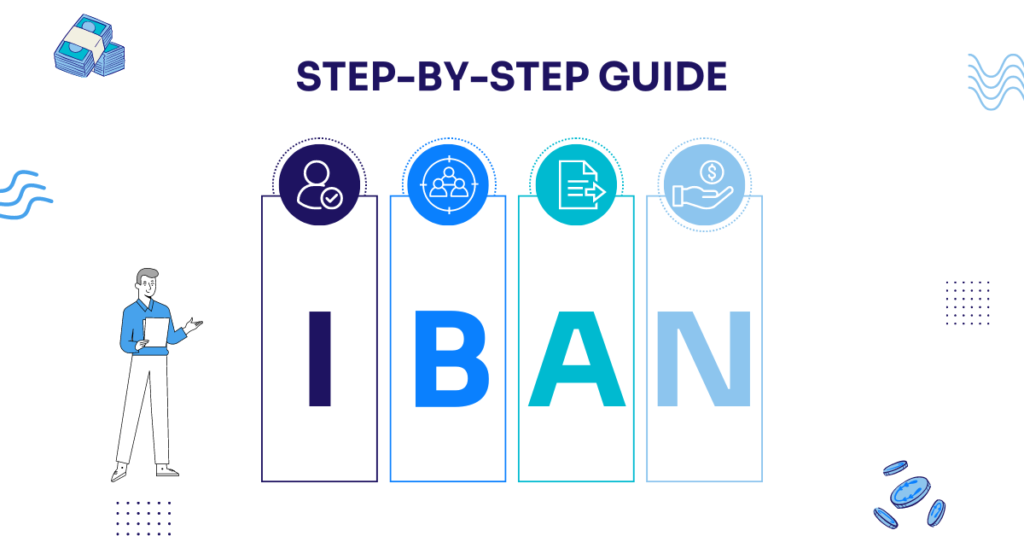Rise of Crypto Adoption in Business
The crypto landscape is rapidly evolving, with a growing number of businesses embracing digital assets for diverse applications— from investment and operations to transactions.
The first cryptocurrency, Bitcoin, was launched in 2009. Its first transaction was used for two Papa John’s pizzas. In 2022, 2,352 US businesses accept Bitcoin not including ATMs. According to a late estimate, around 15,174 businesses worldwide accept Bitcoin. Major retailers are adopting crypto payments for everyday items like groceries and airline tickets, and even luxury brands are joining the crypto bandwagon.
Why should your company consider tapping into crypto?
- Competitive Edge: Multiple surveys and market analyses indicate that integrating cryptocurrency payments and investments can offer businesses a strategic advantage over competitors who are slower to adapt.
- Market Expansion: Accepting cryptocurrency can extend your market reach by attracting a whole new customer base that prefers using digital currencies over traditional methods.
- Harnessing Blockchain Technology: Beyond the digital currency itself, blockchain technologies like smart contracts and NFTs (Non-Fungible Tokens) offer businesses a plethora of opportunities to offer new kinds of customer experiences.
- Investment Diversification: Cryptocurrency plays an increasingly important role in diversified investment portfolios, offering higher yields albeit at higher volatility.
However, this frontier also presents challenges and risks that require thoughtful planning. Before taking the plunge, it’s crucial to understand why you’re adopting crypto, and prepare a list of considerations and questions relevant to your business model.
To ignite discussions within your business about cryptocurrency adoption, explore these key reasons why many companies are already leveraging digital assets.
Key Benefits of Cryptocurrency Adoption
- Tapping Into New Customer Demographics: By accepting crypto, you automatically make your services accessible to a tech-savvy demographic that might otherwise not engage with your business.
- Boosting Internal Awareness: It opens the door to raising internal organizational awareness and understanding of digital assets, facilitating future adoption of emerging technologies.
- Liquidity and Investment: Businesses can unlock new kinds of tokenized investment opportunities, which can offer an array of liquidity options not possible through traditional investment vehicles.
- Advanced Financial Tools: Crypto can facilitate real-time revenue-sharing agreements, enhanced transparency, and more, through smart contracts and decentralized finance (DeFi) solutions.
- Meeting Stakeholder Preferences: More clients and vendors are seeking to transact in crypto. Being prepared for this ensures smoother exchanges with critical stakeholders.
Tackling Risks and Operational Challenges
- Treasury Management: Organizations need to balance traditional treasury functions with newer, more volatile crypto assets.
- Operational vs. Investment Mindset: The approach to crypto will differ depending on whether the assets are intended for operational liquidity or long-term investment.
- Regulatory and Tax Compliance: A well-defined strategy is essential for navigating complex and ever-changing regulatory and tax landscapes.
Implementation: Two Approaches to Crypto Integration
When integrating crypto into your business operations, there are two key approaches to consider: the “Hands-off” path, which entails enabling payments without holding crypto assets, and the “Hands-on” path, where you delve deeper into owning and managing cryptocurrencies.
“Hands-off” Approach: Enabling Payments
This path is best suited for enterprises that aim to tap into new clientele and expand transaction volumes without drastically altering their internal processes. By outsourcing the conversion of crypto to fiat and vice versa, the operational burden is lightened, yet compliance and risk management considerations remain.
Key Features
- Quick and easy entry point into digital assets
- Minimal operational adjustments
- Reliance on third-party vendors for crypto-to-fiat conversions
Key Considerations for Partnering with Third-Party Crypto Payment Vendors
For high-risk industries looking to venture into the world of cryptocurrency, third-party vendors can provide an easier entry point. However, it’s crucial to select a vendor attuned to compliance issues such as anti-money laundering (AML), know your customer (KYC), and OFAC, and fully understand the potential implications for your business.
Here are some critical points to consider:
Due Diligence on Vendor Capabilities
- Resilience and Responsiveness: Examine how the vendor has met past challenges and their ability to adapt to market changes.
- Customer Experience: Understand how vendor actions (or lack thereof) may impact customer interactions, especially concerning the acceptance and issuance of crypto payments.
- Internal Controls and Security: Check the vendor’s cybersecurity measures, fraud detection capabilities, and general financial health. Reputable vendors should be able to provide third-party assurance reports like SOC 1 or SOC 2.
- Conversion Accuracy: Assess how reliably the vendor converts cryptocurrencies to fiat currencies and vice versa. Also, inquire about the reliability and accuracy of all accounting and tax information provided.
- Creditworthiness and Counterparty Risk: These are particularly important in high-risk industries where the financial stability of partners can be a concern.
Financial Implications
- Conversion Pricing: Understand the pricing mechanism the vendor uses for converting cryptocurrencies to fiat and if this exposes your business to price volatility.
- Settlement Responsibility: Keep in mind that the vendor is an agent. Ensuring settlements and compliance remains your responsibility.
Global Business Considerations
- Regulatory Compliance: Given the ever-changing landscape of global licensing and regulations, ask how the vendor stays compliant across all jurisdictions.
- Technical Support: Does the vendor offer round-the-clock technical support across all operating jurisdictions (“follow the sun” model)?
- Transfer-Pricing Planning: Assess how relying on a third-party vendor might impact your company’s transfer-pricing strategies.
- Foreign Currency Accounting: Explore how the use of a vendor affects your accounting for transactions in foreign currencies.
Partnering with a third-party crypto payment vendor can simplify your entry into the crypto ecosystem, especially for high-risk industries that may find it challenging to navigate this space independently. However, selecting your vendor should be a meticulous process that involves a thorough review of various operational and compliance aspects. Your due diligence will help you reap the benefits of the crypto world while mitigating risks.
“Hands-on” Approach: Beyond Payments
This approach offers the potential for greater rewards but also demands a comprehensive strategy that addresses complex technical, compliance, and risk considerations. You can either rely on a third-party custodian for managing crypto assets or integrate crypto into your own systems. The latter requires a more in-depth understanding and management commitment but offers more control over transactions.
Key Features
- Increased operational involvement
- Enhanced benefits and technical considerations
- Third-party custodianship or self-custody options
Preliminary Issues
- Clearly define what the company aims to achieve to avoid scope creep and mismanaged risks.
- Assess the Treasury’s readiness to manage and monitor crypto payments.
- Decide on whether to maintain custody of crypto assets or outsource to a third party.
- Contemplate potential investments in crypto as a new asset class.
- Anticipate future impacts from Central Bank Digital Currencies (CBDCs).
By carefully selecting your approach based on your company’s specific objectives and risk profile, you can navigate the challenges and seize the opportunities presented by the integration of crypto into your operations.
Wallet Management and Transaction Tracking in Crypto Treasury
Understanding wallet management and transaction tracking is crucial for businesses entering the crypto space. Companies often adopt a multitiered wallet structure, using hot wallets for operational needs and cold wallets for long-term storage.
TYPES OF WALLETS
Hot Wallets
These are digital wallets connected to the internet and are primarily used for operational needs. They facilitate immediate transactions, including:
- Rapid payments
- Transfers of funds in crypto
- Short-term savings and investments, similar to money market accounts
Hot wallets are especially significant for the Treasury function. They not only enable immediate transactions like rapid payments and short-term investments but also offer real-time visibility into the crypto assets, helping the Treasury make timely allocation adjustments.
Cold Wallets
These are offline storage solutions, ideal for holding assets long-term and far less susceptible to hacking.
Transaction Tracking
Transaction tracking becomes essential when dealing with high volumes of crypto transactions. Businesses usually keep detailed records of the date and time of crypto acquisition, its initial value, and any cost basis assigned.
Stablecoins for Stability
Many businesses convert to stablecoins to mitigate the price volatility commonly associated with cryptocurrencies. Stablecoins can be especially useful for entities dealing with high volumes of transactions, where price stability is crucial.
For businesses, especially those in high-risk industries, an organized approach to wallet management and transaction tracking can greatly streamline the crypto treasury function. It enables rapid transactions for immediate needs while providing a secure mechanism for long-term holdings. Make sure your wallet structure aligns with your overall business and financial strategies to maximize the advantages of using crypto assets.
Navigating Second-Layer Protocol Risks
Second-layer protocols (or L2 protocols) are gaining prominence for their ability to scale blockchain transactions by making them quicker and more cost-effective. While they hold the promise of revolutionizing payment systems, these protocols come with their own set of risks that companies, especially those in high-risk sectors, need to consider.
What Are Second-Layer Protocols?
These are applications that function atop existing blockchain systems to facilitate quicker and more cost-effective transactions. They are particularly useful for micropayments where the direct settlement fee on a blockchain could exceed the transaction value itself. In essence, these protocols act as a buffer, aggregating multiple transactions off-chain before settling them on-chain.
Why Use Them?
The appeal of L2 protocols is evident in their efficiency. They significantly reduce transaction costs and settlement times, making them viable for small transactions, from buying a cup of coffee to paying a weekly salary. As these protocols evolve, they are expected to become increasingly competitive with, and possibly even replace, traditional payment systems.
Risks in Corporate Settings
While second-layer protocols offer evident advantages, they are not without risks, especially when used in corporate settings.
Here’s why:
Delayed On-Chain Settlement: Transactions are not immediately recorded on the blockchain. They are first aggregated off-chain, and only after finalization are they settled on-chain.
Vulnerability Window: The transition from transaction execution to blockchain recording presents a window of vulnerability where errors or malicious manipulation can occur if a hostile party gains network access.
Key Considerations
- Security Measures: Ensure robust security protocols to guard against unauthorized access during the transition phase.
- Vendor Diligence: If using third-party solutions for second-layer protocols, conduct thorough due diligence, particularly focusing on their security measures and compliance standing.
- Continuous Monitoring: Given that the landscape of second-layer protocols is continually evolving, staying updated on developments is crucial for risk mitigation.
Understanding the mechanics and risks of second-layer protocols enables companies to make informed decisions. These protocols, with their potential to revolutionize traditional payment systems, deserve close scrutiny and thoughtful integration into your business model.
Embracing the Crypto Frontier in High-Risk Industries
The integration of cryptocurrency and related technologies into business operations offers a wealth of opportunities, especially for companies operating in high-risk industries. From expanding market reach and attracting a new, tech-savvy customer base to enhancing internal financial capabilities and diversifying investment portfolios, the crypto space offers avenues for innovation and growth that are hard to ignore.
However, this journey is fraught with complexities that require meticulous planning and strategic foresight. Deciding between a “Hands-off” and “Hands-on” approach to crypto, grappling with regulatory uncertainties, and mastering the intricacies of wallet management and second-layer protocols are not tasks to undertake lightly.
The crypto landscape is an evolving frontier that demands continuous learning, careful planning, and adaptive strategies. Companies in high-risk sectors can ill afford to ignore this burgeoning field, but successful engagement will require expertise and calculated execution. With the right guidance and tools at your disposal, you can seize the transformative potential that cryptocurrencies offer while mitigating associated risks.
Capitalixe makes diving into the crypto world easier for your business. We link you with top financial partners and offer specific services that simplify crypto transactions. Our efficient process ensures you can focus on your business while we handle the complex financial details.
Ready to get started? Contact our team of experts today!









